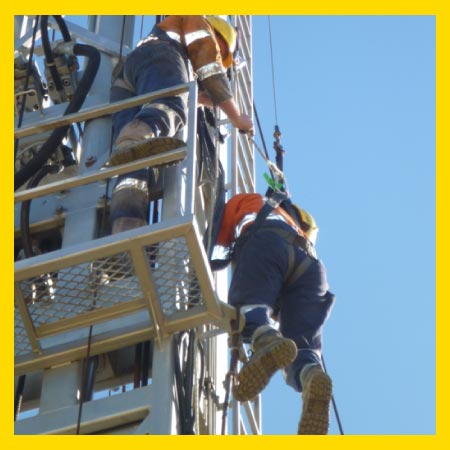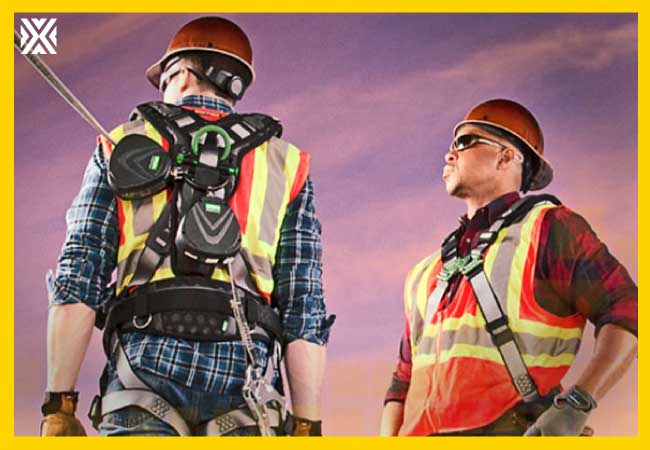Currency
October 11, 2020

When a worker is at risk of serious injury or death while working at heights, suitable self-retracting devices (SRDs) and the accompanying accessories are mandatory. These devices are designed to prevent a worker from contacting surfaces below that where work is being performed.
Independent, global organizations are responsible for developing the standards and guidelines for the manufacturing design and testing of these devices. In the United States, the American National Standards Institute (ANSI) is the standards organization. In Canada, the Canadian Standard Association (CSA Group) develops these standards.
Both of these organizations are also responsible for developing and updating standards and guidelines for inspecting and certifying SRD equipment. On August 1, 2019, the CSA’s new standard—CSA Z259.2.2-17—went into effect, with significant updates and revisions incorporated.

This article is meant to cover the highlights of the revised standard. For complete details, secure a copy of the full standard to help ensure that your fall protection program meets the mandatory requirements.
There were several types of modifications in the newly revised standard. Some were terminology changes. For example, “personal fall arrest systems” was changed to “fall-protection systems.” Others were definitions revisions for “lifeline” and “arrest distance.” You’ll want to refer to the standard itself for those and the seven new definitions, including peak force, performance factor, and fall arrest indicator.
A major change was the revamping of the classifications. Type 1, Type 2, and Type 3 are not used anymore. Instead, there are now four new classes of SRDs:
● Class SRL—It is anchored at an elevation which limits the free fall to the activation distance of the device … and the extracted life line cannot bear against an edge or surface during fall arrest.
● Class SRL-R—Shall be a Class SRL device that is provided with an integral means for assisted rescue.
● Class SRL-LE—An SRL with Leading Edge capability. In addition to application for SRL devices, a Class SRL-LE shall be suitable for applications where one or more of the following conditions are met: It is anchored lower than the dorsal D-ring of the full-body harness; The extracted lifeline can bear against an edge or surface during fall arrest.
● Class SRL-LE-R—An SRL with Leading Edge and integral rescue capability. Class SRL LE-R shall be both suitable for SRL-LE and SRL-LE-R conditions.
Another name change is that “Recertification” has been changed to “Revalidation.” It is more than just a name change, however. Revalidation requires that the SRDs be sent to the manufacturer or authorized rep for regular inspections and maintenance at specified intervals.
The new change to Revalidation also affects who determines the degree of use SRD involved. A “competent person,” as defined specifically in the new Standard, shall categorize each SRD utilized according to three pre-defined types of duty/use:
1. Infrequent to Light Use – such as rescue and confined space or factory maintenance
2. Moderate to Heavy – used in transportation, residential construction, utilities, and warehousing
3. Severe to Continuous Use – commercial construction, oil and gas operations, mining, and foundry work
Of course, the worker frequency of inspection for all usage types remains as always: before each use.
However, infrequent/light use SRDs must be inspected annually by the designated competent person, and revalidated by the manufacturer at least every 5 years, but not more than intervals required by the manufacturer.
Moderate/heavy use SRDs must be inspected by the designated competent person on a semi-annual to annual basis, and revalidated at least every 2 years, but not more than intervals required by the manufacturer
Severe/continuous use SRDs require quarterly to semi-annual inspection by the designated competent person. The manufacturer must revalidate the SRD at least annually, but not more than intervals required by the manufacturer.
The general scope of the CSA standard for SRDs remains the same. This includes the equipment to be used for workers at risk of falls from height. It also continues to require SRDS for personal fall arrest systems incorporating the means necessary for assisted rescue following a fall arrest incident.
The need for reevaluation of safety standards is necessary to ensure continuing worker safety on the job.
Both of these organizations are also responsible for developing and updating standards and guidelines for inspecting and certifying SRD equipment. On August 1, 2019, the CSA’s new standard—CSA Z259.2.2-17—went into effect, with significant updates and revisions incorporated.

This article is meant to cover the highlights of the revised standard. For complete details, secure a copy of the full standard to help ensure that your fall protection program meets the mandatory requirements.
What Changed in the Revised CSA Z259.2.2-17 Standard?
There were several types of modifications in the newly revised standard. Some were terminology changes. For example, “personal fall arrest systems” was changed to “fall-protection systems.” Others were definitions revisions for “lifeline” and “arrest distance.” You’ll want to refer to the standard itself for those and the seven new definitions, including peak force, performance factor, and fall arrest indicator.
A major change was the revamping of the classifications. Type 1, Type 2, and Type 3 are not used anymore. Instead, there are now four new classes of SRDs:
● Class SRL—It is anchored at an elevation which limits the free fall to the activation distance of the device … and the extracted life line cannot bear against an edge or surface during fall arrest.
● Class SRL-R—Shall be a Class SRL device that is provided with an integral means for assisted rescue.
● Class SRL-LE—An SRL with Leading Edge capability. In addition to application for SRL devices, a Class SRL-LE shall be suitable for applications where one or more of the following conditions are met: It is anchored lower than the dorsal D-ring of the full-body harness; The extracted lifeline can bear against an edge or surface during fall arrest.
● Class SRL-LE-R—An SRL with Leading Edge and integral rescue capability. Class SRL LE-R shall be both suitable for SRL-LE and SRL-LE-R conditions.
Another name change is that “Recertification” has been changed to “Revalidation.” It is more than just a name change, however. Revalidation requires that the SRDs be sent to the manufacturer or authorized rep for regular inspections and maintenance at specified intervals.
The new change to Revalidation also affects who determines the degree of use SRD involved. A “competent person,” as defined specifically in the new Standard, shall categorize each SRD utilized according to three pre-defined types of duty/use:
1. Infrequent to Light Use – such as rescue and confined space or factory maintenance
2. Moderate to Heavy – used in transportation, residential construction, utilities, and warehousing
3. Severe to Continuous Use – commercial construction, oil and gas operations, mining, and foundry work
Of course, the worker frequency of inspection for all usage types remains as always: before each use.
However, infrequent/light use SRDs must be inspected annually by the designated competent person, and revalidated by the manufacturer at least every 5 years, but not more than intervals required by the manufacturer.
Moderate/heavy use SRDs must be inspected by the designated competent person on a semi-annual to annual basis, and revalidated at least every 2 years, but not more than intervals required by the manufacturer
Severe/continuous use SRDs require quarterly to semi-annual inspection by the designated competent person. The manufacturer must revalidate the SRD at least annually, but not more than intervals required by the manufacturer.
What Parts of the Standard Did Not Change?
The general scope of the CSA standard for SRDs remains the same. This includes the equipment to be used for workers at risk of falls from height. It also continues to require SRDS for personal fall arrest systems incorporating the means necessary for assisted rescue following a fall arrest incident.
The need for reevaluation of safety standards is necessary to ensure continuing worker safety on the job.









